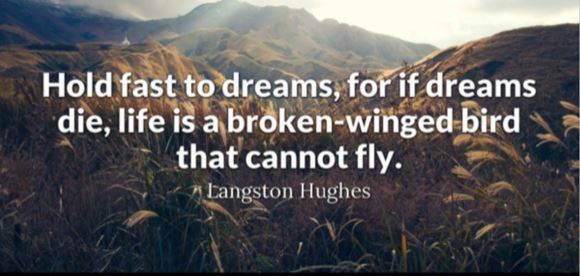Breaking through the email barrier
There has never been a better time for email outreach, the stay-at-home economy requiring workers to be tethered to their devices more than ever. A few weeks back, the CEO of Intel told NPR this was the first time he’s been home in 30 years, his email, video conferencing and phone becoming the life-blood of business. That means you, the business development, sales or PR person, are presented with the best opportunity to get in front of the right person for your pitch.
Yet you it’s not always as easy as connecting through Linked In, especially when you want to reach executive staff. Emails are switched up and around, purposefully confusing the outsider. Because I’ve spent several decades breaking through the email barrier, “cold-emailing” and getting responses from the executive levels at the largest retail, technology, banking and manufacturing companies in the world, I’m going to share a few tried and proven tricks.
Conventions
A convention is technology-industry-speak for a format used by the company. These are pretty simple and vary depending on the size of the company. When it was small, it was bill@microsoft.com – which of course, was for Bill Gates. It remained so until he formally left his position. All other bills had a convention using numbers. As the company grew, it modified the names in a combination of first and last names, letters and so on. A great example of this is Steve Ballmer. His email was steveb@microsoft.com. Because so many Steve’s had the last name b, he was referred to internally as steveb–when in conversation. “Steveb said this…” “that’s what Steveb wants.” For years, I was known as Sarahg within that same organization (thus proving we can morph into our email names).
Most commonly used conventions
- First
name, last initial: sarahg@
- First
name only: sarah@
- First
initial, last name: sgerdes@
- First
and last: sarahgerdes@
If the company is
a mid-size (250 or above), you will have the same names. In this context, they
usually modify the first or last only slightly, but adding the second, then
third letter, or also adding a number.
- First
name, last initial: sarahge@
- First
name only: sarah1@ or sarah01@
- First
initial, last name: sagerdes@
- First
and last: sarahgerdes01
It’s rather amazing how uncreative those assigning names are, and how easy it is to penetrate a firm using a combination of the above.
Conventions aren’t limited to just the first and last names. It also applies to the company name. For instance, for Benjamin News Group, a Washington-based firm that’s presently being acquired by another entity, the address ends with @bngspkn.com. It was the first three letters of the company name, then the city where the firm is headquartered. Now, this is different than the URL designation on the main website, so how did I attain that email and correct ending? I called the main number, gave the pitch and was given the name of the general manager. He was out, and what I really wanted was his email. Trying the mail URL didn’t work. It was only later that I learned that the abbreviation his particular city was included in the address line. This shows two things: it is possible to get past the first line of defense (the receptionist and attain the name), the second is that I learned a new convention, even after all these years.
Getting creative
These aren’t always going to work, so you need to dig deeper. Looking up the CEOs name for the largest property holder in the country was done through a search on legal filings! It turns out that families get in spats, and when emails are filed with the court of law as a part of the proceedings, these documents are made public. Along with the full content, so are the emails. Can you believe that people don’t go back and change their emails? I’ve contacts who haven’t changed their emails for two decades, and in fact, I’ve not changed my BMG email in that long. That said, I have disabled it because I’m not taking on new clients at the moment, and if a person wants to get a hold of me, they can get creative themselves.
Another creative way…. social media
This isn’t perfect for a long pitch, but I’ve had executives, fans and parents track me down on Instagram and Facebook (see above comment on creativity). Several of these have been busines oriented, but most have been of a personal nature, seeking additional clarity on a topic I’ve written about. Because I don’t have a service or personal assistant, I eventually get to these items myself. It might take me a while, and I sometimes skip over or neglect my accounts for a while, but I do eventually get there.
Forwarding emails
This is another
little trick that I’ve used myself. I’ve always wanted to make sure that
variations of my name are taken, whether or not I use the various
instantiations. To have one dashboard (or view) of all my accounts, I have them
forwarded to my central account.
Executives do the same, using not just one, but multiple accounts, all being aggregated into a single view. My only caution to you, the sales/biz dev/executive, is to beware of hitting multiple accounts without waiting a reasonable period of time for a response (a week). Don’t hit all of them at once, as much as you want to get after it—the recipient will only become annoyed. It might take a month or so, but be patient.
The list of DON’Ts
On one hand, it’s
wonderful to know that it is possible to reach the CEOs of the largest firms in
the world. By the same token, your email MUST be free of a few things that will
catch it up in spam.
No links. This is the first spam filter applied to
any email. Don’t link to your website, home page, or product listing. You will
never recover.
No links in
your signature. My email
signature (at the bottom, name/title/phone etc.) included the link from my name
to my author page. This was causing my emails to go into junk. It was surprising
for me to learn that even recipients who’d authorized me (my attorney in this
case) had the filters set so high that all my correspondence was going in to
junk. I had to remove the link from my signature in order for him to receive it,
even though I was specifically authorized by him.
No attachments. This also gets caught in the first line of
defense. When writing the first pitch email, it should be so inspiring it gets
a response. Attachments can be sent thereafter.
Don’t copy
another person. If you
have the CEO and a VP, you need to make a choice. The rates of a non-response skyrocket
when you have two or more copied. Why? First, no one is required to respond—the
buck gets passed or the dropped entirely. Common thought is that the person on
the To line will respond, and those CC’d will just observe.
That’s the wrong way to go about it. If you are confident in your pitch (and your product/service warrants it), make it to the CEO, who will in turn, provide it to the executive in charge of that area. Otherwise send it to the VP in the appropriate area. This strategy also provides you options in case you don’t receive a response (ergo, send to the CEO when the vp doesn’t respond or vice versa).
Bouncing or received?
How do you know if
an email is incorrect? The email will immediately bounce as undeliverable. You know
it’s working when the email doesn’t bounce, but you don’t receive a response.
This indicates it’s likely gone into a “holding folder” where an assistant is
assigned to look at it.
One such case was when I sent my first email to Steve Ballmer when he was at Microsoft. In that instance, I new I had the right email as I was a vendor. After three days, I received a response providing direction on the opportunity at hand, and when I inquired, learned that he had three assistants monitoring his email. He’d respond personally after a first review of the incoming mails were culled.
When to send
There’s an adage I
heard a million years ago when I was starting out. My vice president of marketing
told me “the higher the title, the earlier they will be up.” I’d been sending
emails between the standard workday, thinking if I sent at 8 am (their time,
not mine) I’d be the at the top of the in-box. Sure, I might have been, but by
that time, the day was off and running, and the email wouldn’t even be opened
until the afternoon. Conversely, if I sent the email in the afternoon (thinking
people were winding down the day) I’d get more mindshare. Negative on that.
Tired, grumpy and overwhelmed tended to be the emotions I’d experience when I
placed a follow up call.
Sending early,
as in 6 a.m. Yep, I wrote
that. A CEO has thinking about the business 24×7, rising early to get a jump on
the day. Delegation is one key to success, so the email is read and forwarded
to the right person. If that means you are on the west coast, you get up at
3:30 a.m. and send that baby off (unless your system can schedule it for you),
but beware. If you receive an immediate response and don’t answer, it’s clear
that it’s a bot on your end.
In a recent example, I sent an email to the CEO of a $26B firm last week. He responded in 1 hr 22 seconds, forwarding the inquiry pitch to two vice presidents, one being the primary contact.
Sending Sunday night. Until recently, this has been my favorite time to send an email, because I constantly found that CEOs weren’t/aren’t waiting until Monday morning. Many get online Sunday night to plan for the week ahead. Last month I sent off a pitch to a Canadian investor originally from Hong Kong on Sunday, because he’d specifically told me he likes to receive items Sunday night. Within an hour I had my response to the proposal and next steps.
I say “until
recently” because I’m personally trying to not work on Sunday for any reason,
not even cracking my computer open to write or work. As I’ve aged, I’ve gotten
more focused on family than business, especially on Sunday. If you don’t share
this perspective, then by all means use this as a tool—and sometimes, others
will require it.
Now go forth, write and send—oh wait, it’s Thursday afternoon. Not yet!











